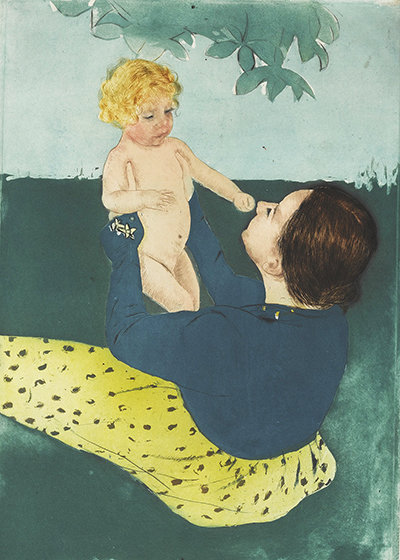Under the Horse Chestnut Tree by Mary Cassatt captures a tender moment between a mother and her child. A mother is admiring her child, a fine-looking infant. One almost feels like an intruder here, and you wouldn’t be wrong.
But someone needs to capture those special moments to which we can all relate. The mother looks proud, protective and contented. Why is it that so many people say that women are at the height of their fulfilment in motherhood? This artwork was created in 1896, using a medium other than painting. It’s a colour print of drypoint and aquatint. Art is nothing if not innovative and the medium is often as important as the message. Mary Cassatt has left behind an enduring body of work for generations to enjoy. This artist was a painter for certain. But she was a printmaker too and it reflects in her artwork. She was known in Impressionist circles, we are told. Did the Impressionists influence her or did she influence them? Perhaps inspire is a better way to say it.
She may have moved in Impressionist circles, yet she refused to allow herself to be classified. But in this particular painting, what strikes us more than anything else is the tenderness of the moment. We cannot see the mother’s face fully as it is partially obscured, but her expression is unmistakable and the proud yet protective way she holds her child is an amazing moment to capture. It takes an artist of talent to capture such tender and private moments. These opportunities don't present themselves often.
Mary Cassatt was born in Allegheny in Pennsylvania. Yet she lived much of her adult life in France. France is where she eventually died at the age of 82. Mary Cassatt remained single throughout her life. But she was a keen observer who beautifully depicted women's lives in her body of work. Although single, she was no stranger to family life, visiting frequently with her married siblings and observing them and their spouses and children as they went about their daily activities. This makes her something of a chronicler of women’s lives. As a woman, albeit a single woman, she had the freedom to move in and out of the world of women and got the opportunity to capture that world in a way a male artist never could.




